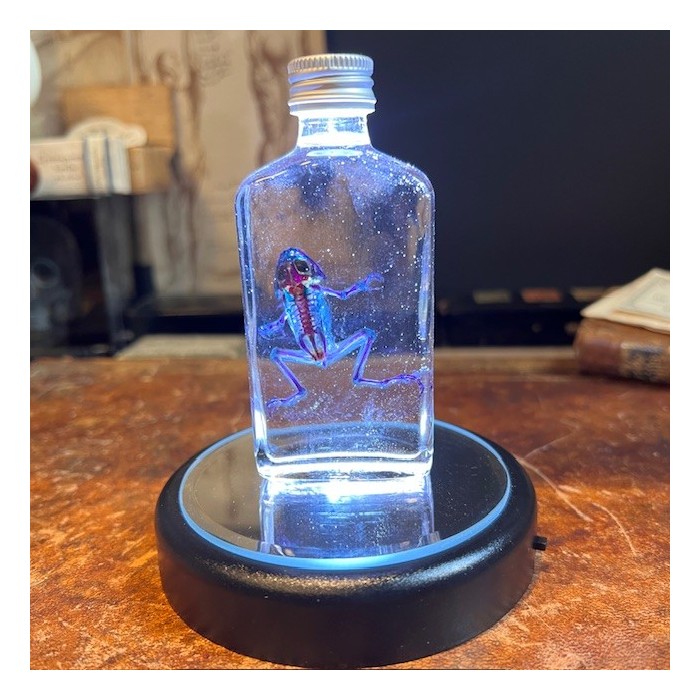
Goose egg - Emptied and disinfected - WITHOUT base
Goose egg - Emptied and disinfected
Height: approximately 8/9.5cm
You are buying 1 egg, not the whole set. The price is per unit







Diaphanization of a frog - Pelophylax ridibundus crossbred INRA (RIVAN92 strain)
Biological preparation
The aim of diaphanization is to render the tissues transparent through a chemical process, and specific dyes are used to highlight the skeleton.
You can see the bones through the skin!
Not a protected species
Diaphanization of a frog - Pelophylax ridibundus crossbred INRA (RIVAN92 strain)
The aim of diaphanization is to make bones transparent and visible through the flesh.
The tissues are made transparent by a chemical process, and specific dyes are used to highlight the skeleton.
You can see the bones through the flesh!
This is mainly used for animals too small to be prepared for osteology in the conventional way, or to study ossification sequences, for example.
This is a frog species from a breeding farm.
The frog in question is Pelophylax ridibundus (strain RIVAN92), domesticated by INRA, a cross between species intended for consumption, it is not a protected species.
The flask contains no formalin, as the specimens are fixed prior to preparation.
They are then placed in these flasks filled with pure glycerine and thymol crystals, whose function is to preserve tissues and combat mold.
The animals are not killed to end up in these jars; they are often fetuses or stillborn animals, foodstuffs or animal feed, etc
Size: 9.5cm high
Goose egg - Emptied and disinfected
Height: approximately 8/9.5cm
You are buying 1 egg, not the whole set. The price is per unit
Flight of butterflies under a glass bell
5 Salamis duprei butterflies from Madagascar
Flame gorgon - Red Whip Coral on pedestal - Ellisella grandis from Indonesia
Coyote skull from Canada
Canis latrans
All skulls are different in size, color, teeth etc... They are wild animals that have lived in freedom, so some skulls may have missing teeth or teeth that are worn, cracked or broken.
Shark tooth fossil
Otodus Obliquus dating from the Ypresian: 50 million years ago
Jeweled flower mantis under globe
Species: Creobroter gemmatus
All insects are different
Scarab under a globe
Species: Scarab beetle Megaloxantha bicolor nigricornis
Entomological box - Butterfly Citheronia bellavista
Entomological box
Species: Scarab beetle Mastodocera anthicipes
barracuda in it's glass reliquary box - Sphyraena barracuda
Butterfly under glass bell
Species: papilio phorcas from philippines
Dragon Stone
Septaria egg of Madagascar
It's huge!
Entomological white frame
Species: Papilio Maackii butterfly
Entomological box
Species: Scarab beetle Phaedimus Lydiae
From Philippines captured in 1989
Australian saltwater crocodile skull: Crocodylus porosus
Estuary crocodile
With its CITES permit
30cm
Can only be sold in the European Union- Shengen Area
Sea fan branch
The sea fan is presented in a thick-bottomed box with curved glass.

Diaphanization of a frog - Pelophylax ridibundus crossbred INRA (RIVAN92 strain)
Biological preparation
The aim of diaphanization is to render the tissues transparent through a chemical process, and specific dyes are used to highlight the skeleton.
You can see the bones through the skin!
Not a protected species






